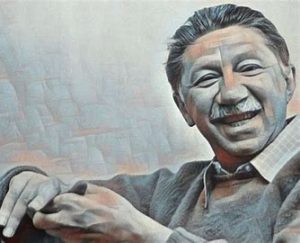
Abraham Maslow, a pioneering American psychologist, introduced his theory of human motivation in his 1943 paper “A Theory of Human Motivation.” This theory, now widely known as Maslow’s Hierarchy of Needs, outlines a progression of human needs, from the most fundamental physiological requirements to the ultimate pursuit of self-actualization. Over the decades, this framework has significantly influenced various fields, including psychology, business, education, and social work, providing a comprehensive lens for understanding human behavior and development.
Historical Context and Development
- Maslow introduced his hierarchy of needs in a 1943 paper titled “A Theory of Human Motivation” and later expanded it in his 1954 book “Motivation and Personality.”
- The theory was influenced by Maslow’s study of exemplary individuals such as Albert Einstein and Eleanor Roosevelt, whom he believed achieved self-actualization.
- In later years, Maslow expanded the original five-stage model to include additional stages: Cognitive Needs (knowledge and understanding), Aesthetic Needs (appreciation and search for beauty, balance, and form), and Transcendence Needs (helping others achieve self-actualization).
- Later in his career, Maslow explored the concept of “self-transcendence,” which involves going beyond the self to connect with something greater, such as helping others achieve self-actualization.
The Structure of the Hierarchy
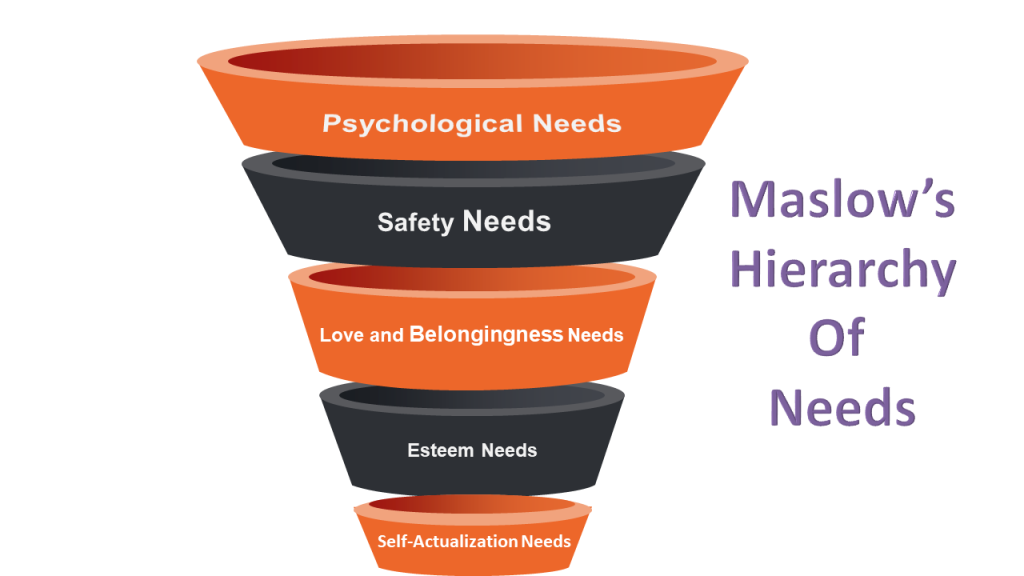
Maslow’s hierarchy is often illustrated as a pyramid, with each level representing a different category of needs that must be fulfilled sequentially. From the base upwards, these levels are:

Physiological Needs: The foundation of Maslow’s hierarchy of needs comprises the essential needs for human survival. This includes air, water, food, shelter, clothing, and sleep. These needs are the most primal and must be satisfied before individuals can focus on higher-level needs. Without meeting these basic physiological requirements, the human body cannot function optimally, and survival is at risk.

Safety Needs: After physiological needs are met, the need for safety and security becomes prominent. This includes physical safety from harm, financial stability, health security, and protection against accidents and illness. Humans have an intrinsic desire to establish a sense of order, predictability, and control in their lives, which is crucial for their mental and physical well-being.
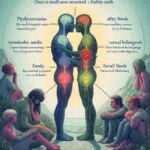
Love and Belongingness Needs: Once individuals have secured their physiological and safety needs, their attention shifts to social needs. These encompass the need for relationships, friendships, intimacy, family, and a sense of community. Humans are inherently social beings, and the fulfillment of these needs promotes emotional well-being and a sense of belonging. Love and belongingness can be manifested through deep emotional connections, social groups, and communal activities.
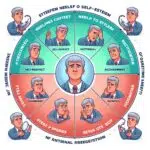
Esteem Needs: This level is divided into two categories: the need for self-esteem (self-respect, achievement, mastery) and the need for external recognition (status, prestige, respect from others). Fulfilling esteem needs leads to feelings of confidence, self-worth, and accomplishment. On the contrary, failure to satisfy these needs can result in feelings of inferiority, helplessness, and discouragement.

Self-Actualization Needs: At the pinnacle of Maslow’s hierarchy is self-actualization, which is the desire to realize one’s full potential and seek personal growth and peak experiences. Self-actualization involves pursuing creative activities, intellectual challenges, and personal development. It is about becoming the best version of oneself and striving for continuous improvement and fulfillment in various aspects of life.
Maslow’s Hierarchy & Corporate Training
As a corporate trainer, understanding Maslow’s Hierarchy of Needs can provide valuable insights into employee motivation, engagement, and development. Here are some additional considerations and applications that can enhance your training programs and overall approach:
Understanding Employee Motivation
- Individual Differences: Recognize that employees are at different stages in the hierarchy. Tailor your training and development programs to address these varying needs. Some employees might need basic security (job stability, safe work environment), while others might seek self-actualization (leadership opportunities, creative projects).
- Motivational Factors: Identify what motivates your employees by using surveys, feedback, and one-on-one discussions. This helps in designing personalized development plans that align with their needs and aspirations.
Creating a Supportive Work Environment
- Fulfilling Basic Needs: Ensure that the workplace meets employees’ physiological and safety needs. This includes providing a comfortable physical environment, fair compensation, job security, and a safe workplace.
- Enhancing Social Needs: Foster a sense of community and belonging within the organization. Encourage team-building activities, social events, and open communication channels to build strong interpersonal relationships among employees.
- Boosting Esteem Needs: Recognize and celebrate employees’ achievements. Provide opportunities for professional growth, skill development, and career advancement. Implement recognition programs and reward systems to enhance their self-esteem and confidence.
Promoting Personal and Professional Growth
- Self-Actualization Opportunities: Offer employees opportunities to pursue their passions and interests within the organization. Encourage innovation, creativity, and autonomy in their roles. Provide access to training, mentorship, and resources that support their personal and professional growth.
- Continuous Learning: Promote a culture of continuous learning and development. Provide regular training sessions, workshops, and access to online learning platforms. Encourage employees to set and pursue their personal development goals.
Practical Applications of Maslow’s Hierarchy of Needs in Corporate Training
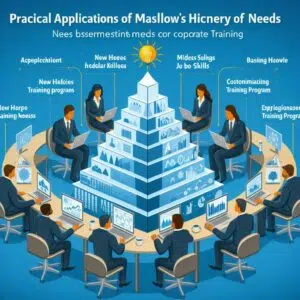
- Needs Assessment: Conduct regular needs assessments to understand the evolving needs of your workforce. Use this information to design relevant and impactful training programs.
- Customized Training Programs: Develop training programs that cater to different levels of Maslow’s hierarchy. For example, new hires might need training that focuses on basic job skills and security, while experienced employees might benefit from leadership training and advanced skill development.
- Employee Well-being: Address the holistic well-being of employees by incorporating wellness programs that cover physical health, mental health, and work-life balance. Happy and healthy employees are more likely to be motivated and productive.
- Feedback Mechanisms: Implement robust feedback mechanisms to continuously improve training programs. Solicit feedback from employees about their training experiences and use it to make necessary adjustments.
Leadership, Management and Maslow’s Hierarchy
Leadership Development: Train managers and leaders to understand and apply Maslow’s Hierarchy of Needs. Effective leaders can recognize and respond to the varying needs of their team members, fostering a more motivated and engaged workforce.
Employee Engagement: Use the principles of Maslow’s hierarchy to enhance employee engagement strategies. An engaged employee is more productive, committed, and likely to contribute positively to the organization.
Conflict Resolution: Understand that unmet needs can lead to conflicts and dissatisfaction. Equip managers with the skills to identify and address these underlying issues, facilitating a harmonious work environment.
Organizational Culture and Maslow’s Hierarchy
Value Alignment: Align organizational values and goals with employees’ personal values and needs. This alignment can lead to a more cohesive and motivated workforce.
Inclusivity and Diversity: Foster an inclusive and diverse workplace that respects and values the needs of all employees. Ensure that everyone has equal opportunities to meet their needs and achieve their potential.
Maslow’s theory serves as a foundation for other motivation theories, such as Herzberg’s Two-Factor Theory and Alderfer’s ERG Theory, which compresses Maslow’s five levels into three: Existence, Relatedness, and Growth. An organization’s culture plays a significant role in meeting employees’ needs. A culture that promotes trust, respect, and recognition can help fulfill safety, social, and esteem needs.
Evaluating and Adapting Strategies
Monitoring Progress: Regularly monitor and evaluate the effectiveness of your training and development programs. Use metrics such as employee satisfaction, retention rates, and performance improvements to assess the impact.
Adaptability: Stay flexible and adaptable in your approach. The needs of employees and the organization may change over time, requiring continuous reassessment and adjustment of training programs.
By integrating Maslow’s Hierarchy of Needs into your corporate training strategy, you can create a more motivating, supportive, and productive work environment. Understanding and addressing the diverse needs of your employees will not only enhance their individual performance but also contribute to the overall success and growth of the organization.
Challenges and Considerations of Maslow’s Hierarchy
Balancing Organizational and Individual Needs: Striking a balance between organizational goals and individual employee needs can be challenging. Continuous dialogue and feedback mechanisms are essential to align these interests.
Adapting to Diverse Workforces: Acknowledge the diversity in the workforce and tailor strategies to meet the unique needs of different groups, considering factors such as age, cultural background, and personal circumstances.
Practical Applications of Maslow’s Hierarchy in Corporate Training

Understanding Maslow’s Hierarchy of Needs can significantly enhance corporate training programs by addressing employee motivation, engagement, and development.
Understanding Employee Motivation:
Individual Differences: Employees are at different stages in the hierarchy. Tailor training programs to address these varying needs. Some might need basic security, while others might seek self-actualization.
Motivational Factors: Identify what motivates employees through surveys and feedback to design personalized development plans that align with their needs and aspirations.
Promoting Personal and Professional Growth:
Self-Actualization Opportunities: Offer opportunities for employees to pursue their passions and interests within the organization. Encourage innovation, creativity, and autonomy in their roles.
Continuous Learning: Promote a culture of continuous learning and development through regular training sessions, workshops, and access to online learning platforms.
Leadership and Management:
Leadership Development: Train managers to understand and apply Maslow’s Hierarchy of Needs. Effective leaders can recognize and respond to the varying needs of their team members.
Employee Engagement: Use the principles of Maslow’s hierarchy to enhance employee engagement strategies.
Conflict Resolution: Equip managers with the skills to identify and address underlying issues, facilitating a harmonious work environment.
Organizational Culture:
Value Alignment: Align organizational values and goals with employees’ personal values and needs.
Inclusivity and Diversity: Foster an inclusive and diverse workplace that respects and values the needs of all employees.
By integrating these insights into Maslow’s Hierarchy of Needs, corporate trainers can create more effective, responsive, and holistic training programs that drive organizational success and enhance employee well-being and fulfillment. Understanding and addressing the diverse needs of employees will not only improve individual performance but also contribute to the overall growth and success of the organization.

![The Power of Storytelling in Corporate Training: Igniting Success and Inspiring Growth [2023]](https://trainercentric.com/wp-content/uploads/2023/06/storytelling-1024x576.jpg)

